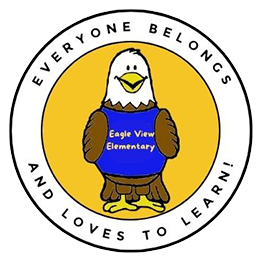School Improvement and Innovation Plan
School Innovation and Improvement Plan At-a-Glance
Eagle View Elementary School, Region 5
KJ An, Principal
| READING BY 3RD GRADE | AREA 1 | ||||||
| Outcomes | |||||||
| ● The percentage of Multilingual Learners in grades K-3 meeting or exceeding VALLSS screener benchmarks will increase by 25% from fall 2024 to spring 2025. ● Universal: By the spring of 2025, at least 80% of students in grades K-3 will meet or exceed the VALLSS screener benchmark. | |||||||
| Strategies | |||||||
| ● Use embedded formative assessments in the new core curriculum to guide tier 1 and tier 2 instructional decisions. ● Increase efficiency of instructional delivery to ensure all students have daily access to all components of the language arts block as outlined in the new core curriculum. ● Leverage use of daily, explicit language comprehension lessons from the new core curriculum for building knowledge and vocabulary. | |||||||
| ELEMENTARY SCHOOL MATH | AREA 2 | ||||||
| Outcomes | |||||||
| ● By the end of the 2024-2025 school year, the percentage of students with disabilities passing the G3-6 Mathematics SOL will increase to 50% (from 25% in the Spring of 2024 to 50% in the Spring of 2025). ● By the end of the 2024-2025 school year, the percentage of unadjusted pass rate of G3-6 Mathematics SOL will increase by 12% from 64% to 76%. | |||||||
| Strategies | |||||||
| ● Improve teachers’ implementation of Framework for Engaging & Student-Centered Mathematics Instruction. ● Increase teacher implementation of explicit instruction and other components of effective mathematics intervention. ● Increase teacher's implementation strategies related to Shift 8: from looking for correct answers towards revealing student thinking. | |||||||
| SCIENCE | AREA 3 | ||||||
| Outcomes | |||||||
| ● By June 2025, Our school’s SOA Science pass rate will be 71% or higher on first attempts in the current year. | |||||||
| Strategies | |||||||
| ● Expand the type and frequency of formative assessments to evaluate progress throughout units and lessons, such as exit tickets, four corners, whiteboards, stoplight reflection. ● Expand opportunities to meaningfully integrate science within and across content areas to include literacy skills, mathematical reasoning, and global context. | |||||||
